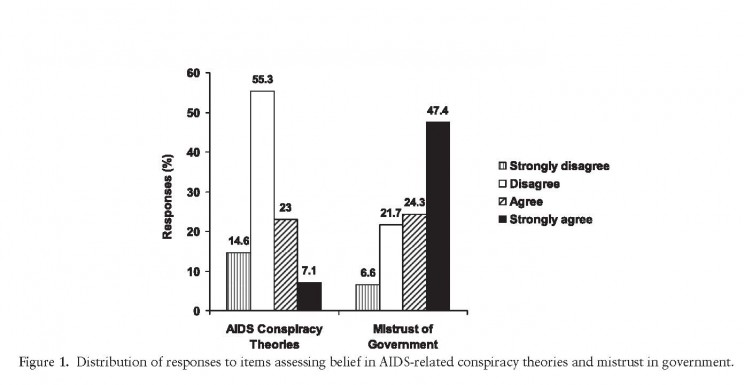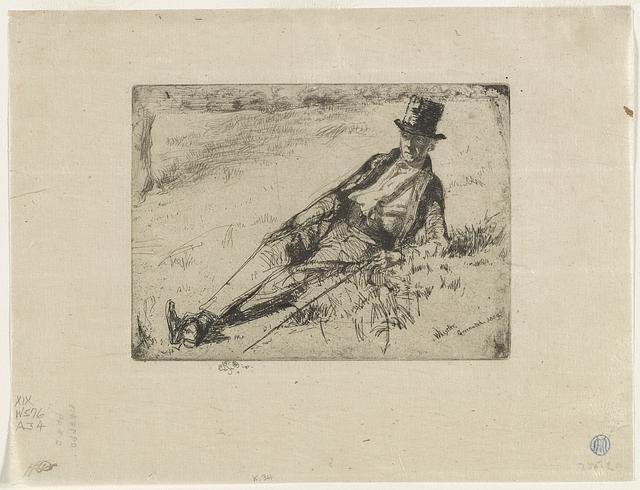By Chandra Ford
The seventh of February will mark the thirteenth National Black HIV/AIDS Awareness Day. Despite the fact that blacks make up only 14% of the US population, the CDC reports that blacks accounted for 44% of all newly reported HIV infections in 2009, the HIV infection rate among Latinos was nearly three times as high as that of whites, and 1 in 4 persons living with HIV/AIDS in the USA is an older adult (50+ years old).
The CDC reported that 1,600 White, 450 Black, and 300 Latino men aged 50 or older acquired HIV in 2009 through unprotected sex with other men. In other research conducted among senior-housing residents, investigators learned that 42% of residents had been sexually active within the previous six months. One third of the sexually active residents reported two or more partners during that period, but only 20% had regularly used condoms.
Alarmingly, older adults are prone to be disproportionately diagnosed in the late stages of HIV disease. Many older Americans who seek services in public health venues do not undergo testing for HIV infection, some due to mistrust in the government. Researchers in a recent study found among the 226 participants, 30% reported belief in AIDS conspiracy theories, 72% reported government mistrust, and 45% reported not undergoing HIV testing within the past 12 months.

Among African Americans, endorsements of AIDS conspiracy theories stem from historical experiences with racism and medical discrimination, although knowledge of African Americans’ experiences may lead members of other racial/ethnic groups to endorse such theories.
Making HIV testing routine in public health venues may be an efficient way to improve early diagnosis among at-risk older adults. Alternative possibilities include expanding HIV testing in nonpublic health venues. Finally, identifying particular sources of misinformation and mistrust would appear useful for appropriate targeting of HIV testing strategies in the future.
Key calendar dates:
7 February 2013 National Black HIV/AIDS Awareness Day
19 May 2013 Asian Pacific Islander HIV/AIDS Awareness Day
27 June 2013 National HIV Testing Day
15 October 2013 National Latino HIV/AIDS Awareness Day
1 December 2013 World AIDS Day
For further reading:
Dr. Chandra Ford is an assistant professor in the Department of Community Health Sciences at UCLA. Her areas of expertise are in the social determinants of HIV/AIDS disparities, the health of sexual minority populations and Critical Race Theory. Ford has received several competitive awards, including the Ruth L. Kirschstein National Research Services Award (an individual dissertation grant) from the National Institutes of Health and a North Carolina Impact Award for her research contributions to North Carolinians. Her most recent research, “Belief in AIDS-Related Conspiracy Theories and Mistrust in the Government” in The Gerontologist, is available to read for free for a limited time.
The Gerontologist, published since 1961, is a bimonthly journal (first issue in February) of The Gerontological Society of America that provides a multidisciplinary perspective on human aging through the publication of research and analysis in gerontology, including social policy, program development, and service delivery. It reflects and informs the broad community of disciplines and professions involved in understanding the aging process and providing service to older people.
Subscribe to the OUPblog via email or RSS.
Subscribe to only health and medicine articles on the OUPblog via email or RSS.
The post HIV/AIDS testing: suspicion and mistrust among Baby Boomers appeared first on OUPblog.

By Chandra Ford
February 7th will mark the thirteenth National Black HIV/AIDS Awareness Day. Despite the fact that blacks make up only 14% of the US population, the CDC reports that blacks accounted for 44% of all newly reported HIV infections in 2009, the HIV infection rate among Latinos was nearly three times as high as that of whites, and 1 in 4 persons living with HIV/AIDS in the USA is an older adult (50+ years old).
The CDC reported that 1,600 White, 450 Black, and 300 Latino men aged 50 or older acquired HIV in 2009 through unprotected sex with other men. In other research conducted among senior-housing residents, investigators learned that 42% of residents had been sexually active within the previous six months. One third of the sexually active residents reported two or more partners during that period, but only 20% had regularly used condoms.
Alarmingly, older adults are prone to be disproportionately diagnosed in the late stages of HIV disease. Many older Americans who seek services in public health venues do not undergo testing for HIV infection, some due to mistrust in the government. Researchers in a recent study found among the 226 participants, 30% reported belief in AIDS conspiracy theories, 72% reported government mistrust, and 45% reported not undergoing HIV testing within the past 12 months.

Among African Americans, endorsements of AIDS conspiracy theories stem from historical experiences with U.S. racism and medical discrimination. Although knowledge of African Americans’ experiences may lead members of other racial/ethnic groups to endorse such theories.
Making HIV testing routine in public health venues may be an efficient way to improve early diagnosis among at-risk older adults. Alternative possibilities include expanding HIV testing in nonpublic health venues. Finally, identifying particular sources of misinformation and mistrust would appear useful for appropriate targeting of HIV testing strategies in the future.
Key calendar dates:
February 7, 2013National Black HIV/AIDS Awareness Day
May 19, 2013 Asian Pacific Islander HIV/AIDS Awareness Day
June 27, 2013 National HIV Testing Day
October 15, 2013 National Latino HIV/AIDS Awareness Day
December 1, 2013 World AIDS Day
For further reading:
AIDS.gov
CDC on HIV/AIDS
The Gerontologist: Belief in AIDS-Related Conspiracy Theories and Mistrust in the Government by Chandra L. Ford et al.
Preventative Medicine: Do blacks believe that HIV/AIDS is a government conspiracy against them? (Klonoff EA, Landrine H).
Journal of Acquired Immune Deficiency Syndromes: Individual, contextual, and social network factors affecting exposure to HIV/AIDS risk among older residents living in low-income senior housing complexes (Schensul JJ, Levy JA, Disch WB).
Dr. Chandra Ford is an assistant professor in the Department of Community Health Sciences at UCLA. Her areas of expertise are in the social determinants of HIV/AIDS disparities, the health of sexual minority populations and Critical Race Theory. Ford has received several competitive awards, including the Ruth L. Kirschstein National Research Services Award (an individual dissertation grant) from the National Institutes of Health and a North Carolina Impact Award for her research contributions to North Carolinians. Her most recent research, “Belief in AIDS-Related Conspiracy Theories and Mistrust in the Government” in The Gerontologist, can be accessed here.
The Gerontologist, published since 1961, is a bimonthly journal (first issue in February) of The Gerontological Society of America that provides a multidisciplinary perspective on human aging through the publication of research and analysis in gerontology, including social policy, program development, and service delivery. It reflects and informs the broad community of disciplines and professions involved in understanding the aging process and providing service to older people.
The post HIV/AIDS testing: suspicion and mistrust among Baby Boomers appeared first on OUPblog.

By Rosemary Wright

Greenwich pensioner by Whistler 1859. Source: Library of Congress.
In 2011, the oldest Baby Boom workers reached the age of 65 — an age that more than 60 million Baby Boomers will reach by 2030. The issue of retirement weighs particularly on women, who are likely to outlive men and therefore have a longer period of retirement to finance.
In the study “Paying for Retirement: Sex Differences in Inclusion in Employer-Provided Retirement Plans,” I turned to the Baby Boomers to determine whether this new generation of women were well-prepared with retirement benefits. Is the retirement gap between Baby Boom men and women narrower than for older retirees? Are women still dependent on a husband’s retirement income for security in old age? To look at these differences, I examined a large sample obtained from the 2009 Current Population Survey for the differences between Baby Boom men and women’s inclusion in retirement plans, as well as predictors of inclusion in these plans.
The results of the new study showed a significantly higher percentage of women than men (68.4% vs. 65.2%) worked for an employer who offered retirement benefits. A slightly higher percentage of men than women (92.4% vs. 91.1%) were included in their employers’ retirement programs. Overall, significant positive predictors of working for an employer with a retirement plan were sex (women more likely than men), employment in a core industry or in a primary occupational sector, educational attainment, and government worker status (government workers more likely than non-government workers). On the other hand, significant negative predictors were minority status (minorities less likely than non-minorities), age (older workers less likely than younger workers), having children younger than age 18 (those with children under the age of 18 less likely than those with no children under 18), and immigrant status (immigrants less likely than non-immigrants).
Minority status and educational level were the only two predictors for which there was a significant sex difference. Minority women were less likely than minority men to work for an employer with retirement benefits. As educational attainment increased, men were more likely than women to work for an employer providing retirement benefits.
Significant positive predictors of a worker actually being included in an employer’s retirement program were age (older workers more likely to be included than younger workers), employment in a core industry or in a primary occupational sector, educational attainment, marriage (married workers more likely than non-married workers), and government worker status. Minority status was the only significant negative predictor of inclusion (minority workers less likely than non-minority workers to be included).
There was only one variable with a significant difference between men and women: government employment. Female public employees were more likely than male public employees to be included in their employers’ retirement programs.
Two major good-news stories emerge from this study. First, a much larger group of workers is included in an employer’s retirement plan in this study than received pension benefits in earlier studies. This reflects the expansion of the types and availability of retirement benefits available to workers today, and is a good sign for retirement security as Baby Boom workers begin to retire. Second, there was only one predictor for which the likelihood of being included in a retirement




